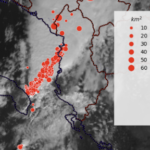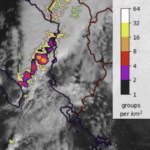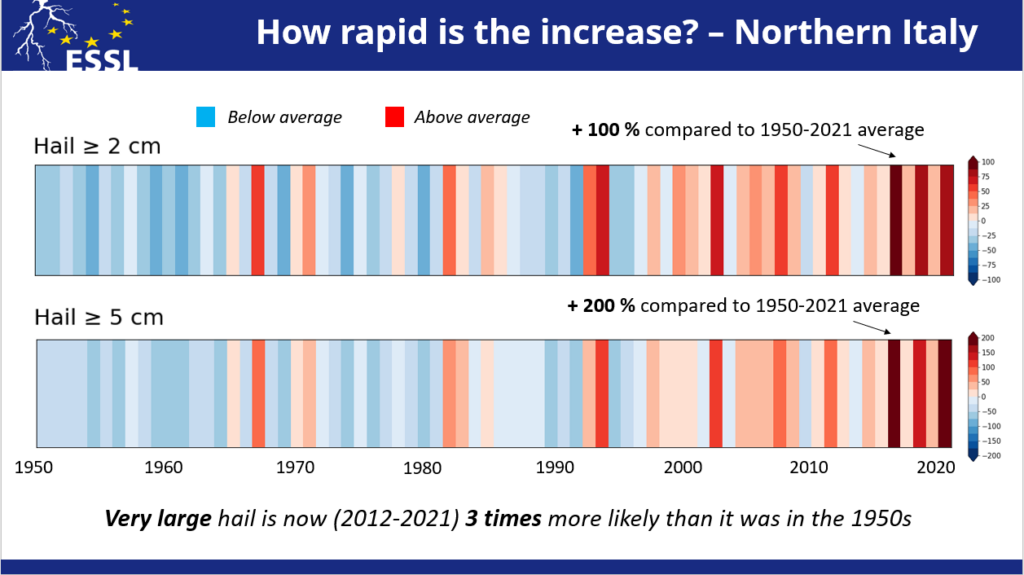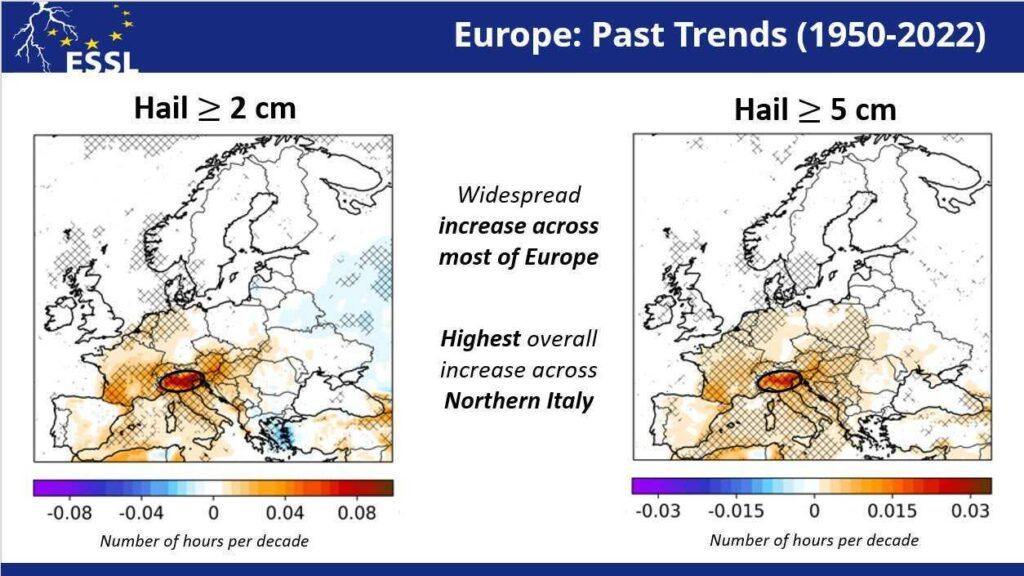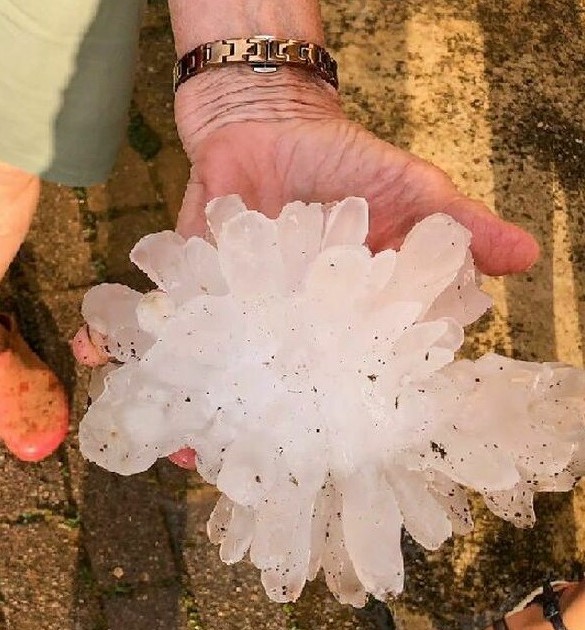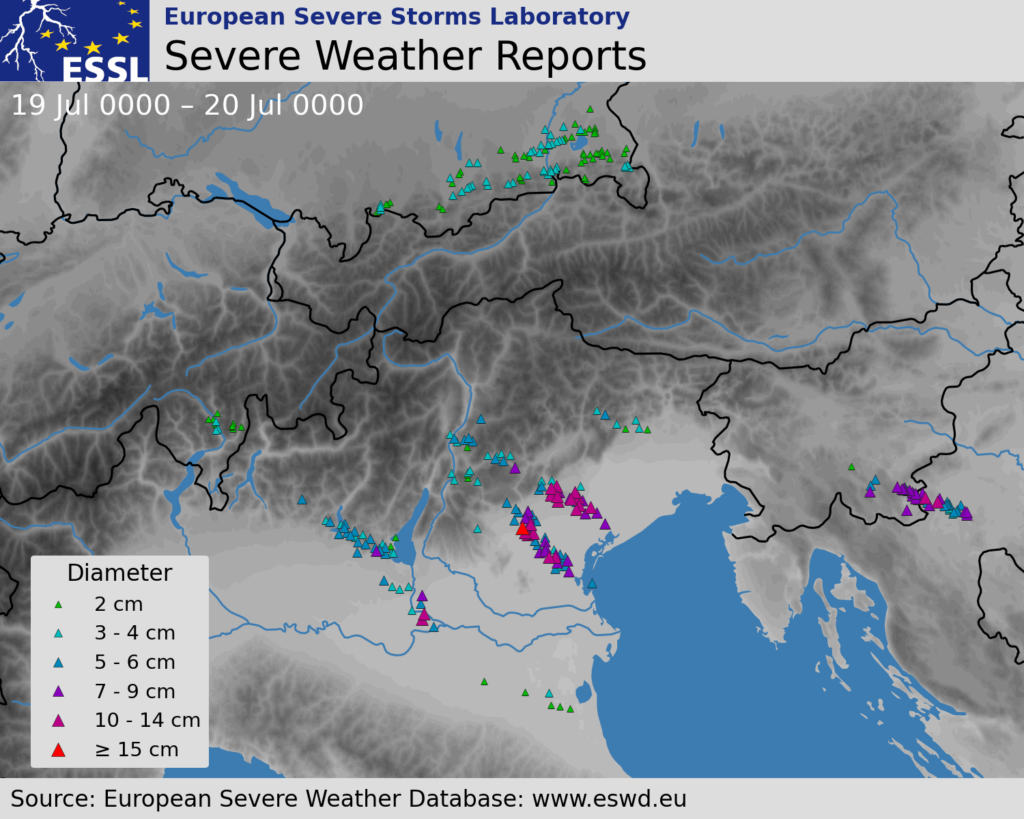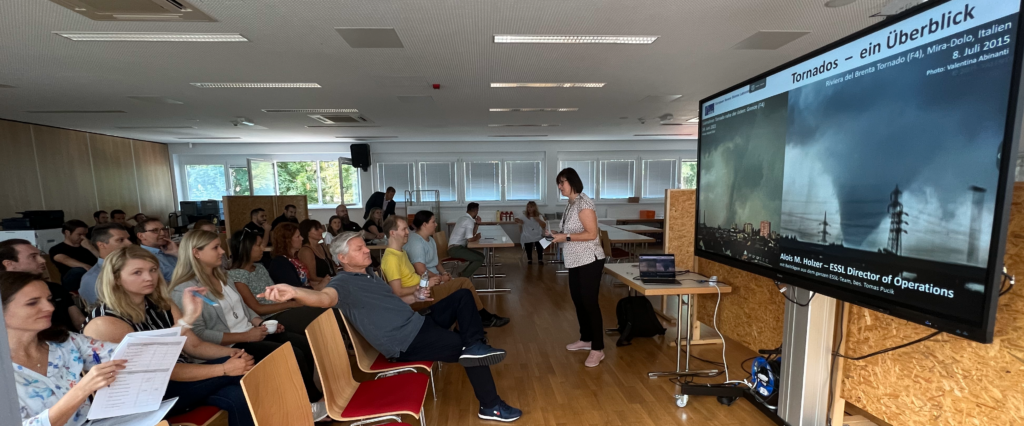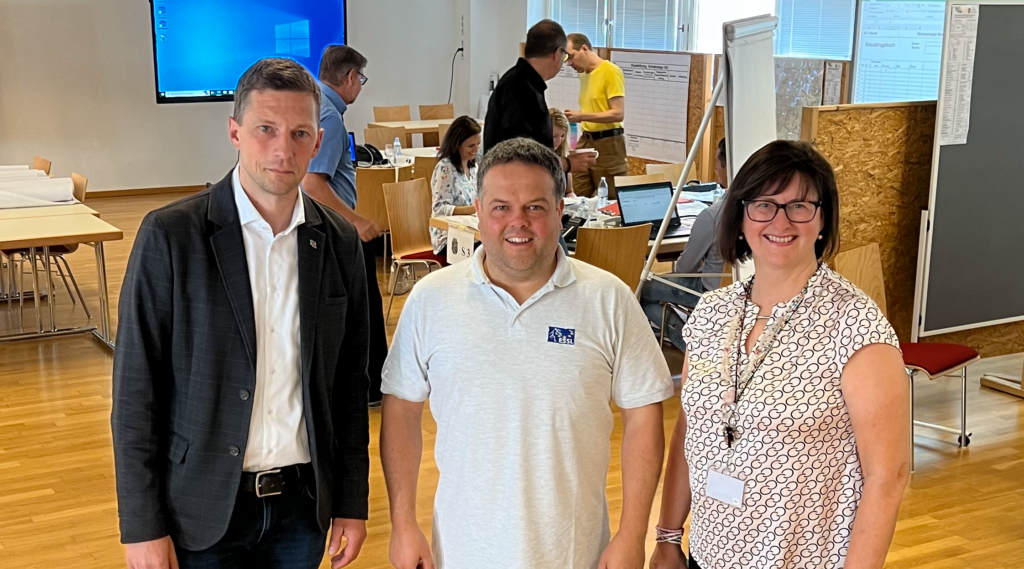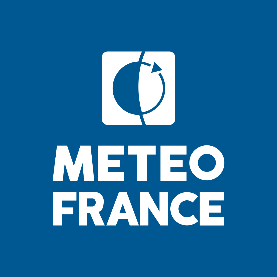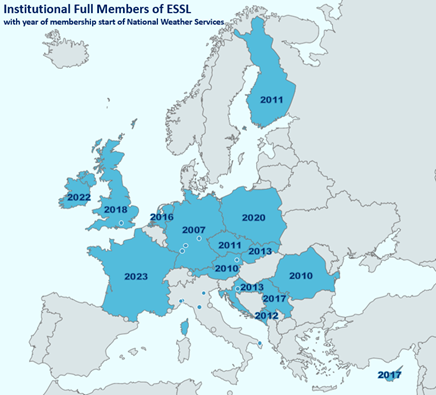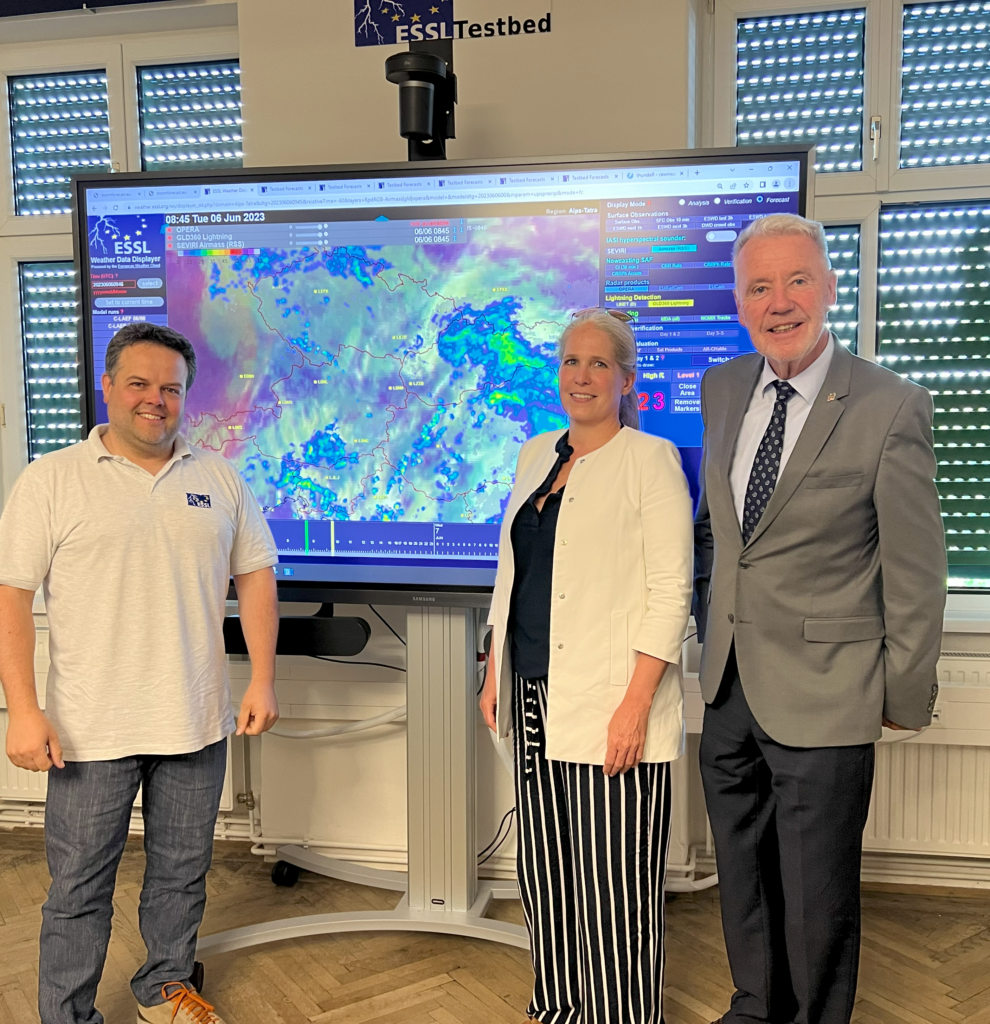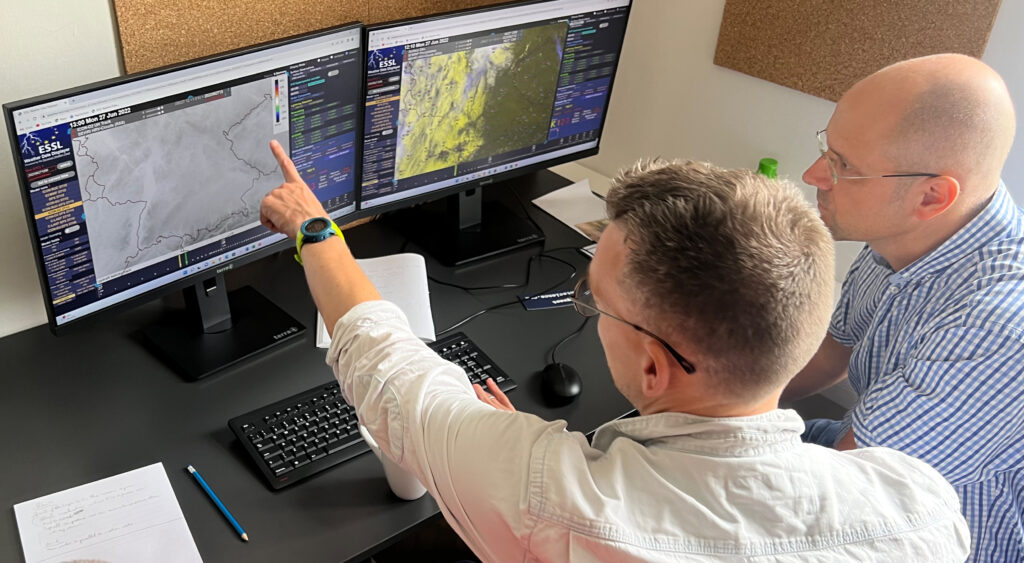Within the context of the cooperation between EUMETSAT and ESSL on user preparation for the MTG data, an experimental visualization of Lightning Imager (LI) data was introduced to the ESSL Weather Displayer. Its preliminary name is “Geometry and density” and it connects all the detected LI groups (connected pixel detections at one acquisition frame of 1 ms) within one single LI flash (collected LI groups that are correlated in space and time within 330 ms) and can be taken as a proxy for the geometry of the flash as seen from space. Each flash is given a different colour. Such a flash geometry can cover large areas, something that has earlier been discovered by using the ISS-LIS and GOES-GLM instruments. In the ESSL Weather Displayer, the visualization combines this information with data on highly active convective cells. Those active cores are made visible via plotting the LI group density if surpassing 1 LI groups per km² within a 5 minute time frame (colour shading from black via magenta, red, orange and yellow to white). Possible applications of such a product may range from public outreach activities via identification of new active updrafts all the way to lightning safety at airports.
LI group density is also visualized in gridded form. In addition, the area size of flashes is plotted for each single flash (the size of red or yellow circles related to the flash area). This allows a forecaster to identify physical processes that are ongoing within a convective complex. Large flash areas are typical for flashes in the stratiform regions while a high number of small flashes can be indicative for a very intense updraft, as it is often seen with supercells in early LI data.
You can read the full newsletter here.
Figures: Screenshots from ESSL Weather Displayer for a geographic area of Albania and surroundings on 4 October 2024 at 09:00 UTC. Left: LI Group Area (red circles). Middle: LI Group Density. Right: LI Geometry and Density (geometry approximation of LI flashes and LI group density above 1 for identification of active convective cores). Data source: EUMETSAT. Visualization: ESSL.

